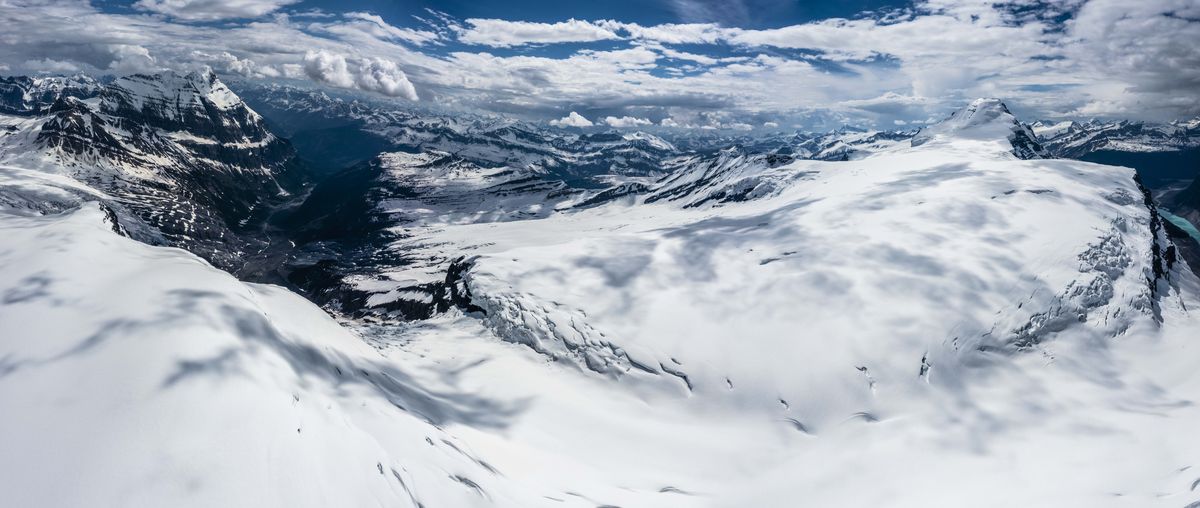About a watershed: New book tells the story of the Columbia River basin through photos

David Moskowitz hasn’t been everywhere in the Columbia River basin, but it’s got to be close.
Moskowitz, a photographer who lives in the Methow Valley, spent the last four years traveling to the far ends of the watershed, a vast territory that includes parts of six states and a chunk of southern British Columbia.
Up north, he scrambled around on the Columbia Icefield, a frozen landscape in the Canadian Rockies. At Kettle Falls, he attended a first salmon ceremony. In southern Yellowstone National Park, a 63-mile trail run brought him to the headwaters of the Snake River. He traveled the Owyhee River watershed, a high desert drainage that collects water from Oregon, Idaho and Nevada before sending it on to the Columbia.
“I tried to get to all of those peripheral places,” Moskowitz said.
The result of all that work is his new book, “Big River: Resilience and Renewal in the Columbia Basin,” published by Braided River Press. The coffee table-sized book showcases the images he made throughout the basin, both from the periphery and from famillar places on the river’s banks.
It also includes an essay by writer Eileen Delahanty Pearkes. The pair will be in Spokane on June 23 for an event at the Magic Lantern Theater.
The book’s arrival comes as the United States and Canada are renegotiating the Columbia River Treaty, a 60-year-old agreement that guides management of the river and its hydroelectric dams.
Moskowitz said the book is meant to invite people to pay more attention to the decisions governing the river, and to care about it.
“It’s a river system that needs some attention, some love,” Moskowitz said. “There are big decisions that we’re going to be making as a society in the next few years.”
This is Moskowitz’s fourth book project, and it’s one that’s been brewing under the surface for a while. He grew up in California but has spent most of his adult life in the Columbia River basin, and most of his work – wildlife tracking, writing, photography and mountain guiding – has involved studying and interacting with the natural landscapes that comprise the basin.
“I’ve done a lot of different things looking at different parts of the Columbia River watershed in different ways,” Moskowitz said. “This was an opportunity to kind of put it together in one way.”
It was also a chance to do something he didn’t see in other books about the Columbia. He said most books about the river focus on what the basin was like before the construction of dams and the proliferation of industry, and not so much about documenting what the basin looks like today.
Sure, there are dams, farms and industrial facilities, Moskowitz said, but that’s not all.
“There’s also really vast tracks of wild land, and wild river tributaries and wild fish and wildlife and an immense variety of different ways that people are still connected to the river in both traditional and modern ways,” he said.
The photos in the book are meant to reflect those connections. He spent time with Indigenous people who catch salmon from the river’s tributaries. He also spent time with farmers and ranchers who irrigate with water from the river system.
Wildlife portraits are also scattered throughout the book – a Canada lynx, a wolf, a cougar and more. Including those was important to Moskowitz because even the remote places they live are a part of the watershed, places where every inch of snow and drop of rain eventually finds its way to the river.
While researching the basin, Moskowitz read Pearkes’ book “A River Captured,” which focuses on the history of the Columbia River Treaty and how the construction of dams reshaped the landscape. He and the publisher approached her about writing an essay to pair with his photographs.
Pearkes, who lives in California but spent many years in Nelson, British Columbia, has written about the Columbia River basin for decades. In the essay, titled “The Grace of Water,” she traces the river’s history, from the geological forces that shaped the basin to today.
“I’m in awe of the power of the Columbia,” Pearkes said. “I hoped by telling a few of those stories people would understand that we are minute by comparison.”
Pearkes did some traveling of her own in the basin, going to Idaho to meet with members of the Nez Perce Tribe and to see the Snake River drainage – a part of the basin she hadn’t been to before. She and Moskowitz mostly worked separately, but at one point they crossed paths on their travels.
Pearkes said the collaboration worked well, and that Moskowitz gave his “voluminous energy” to the project.
“His primary gift to all of us from my perspective was just how far and wide he went to capture the lives of people living in different parts of the basin,” Pearkes said.